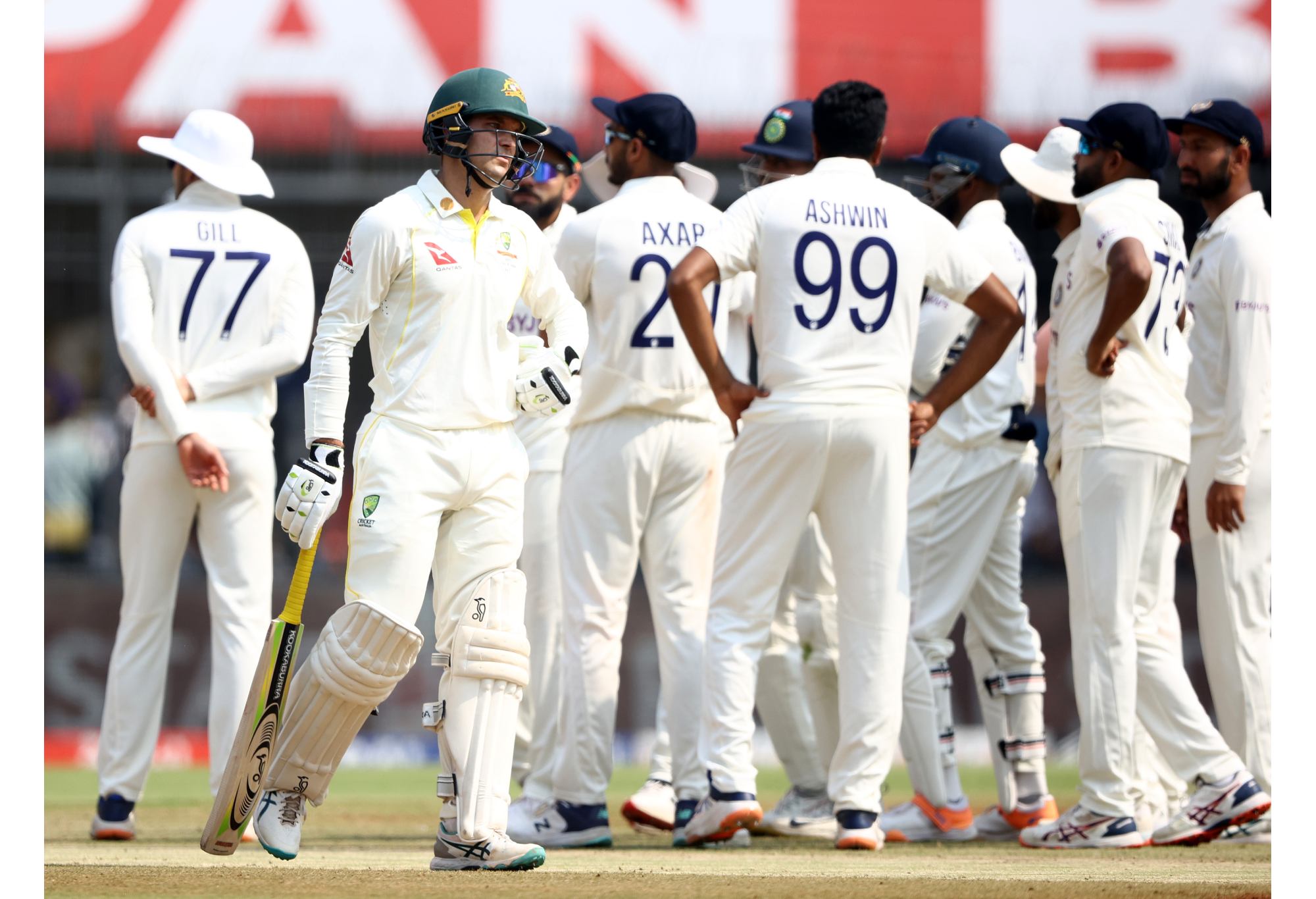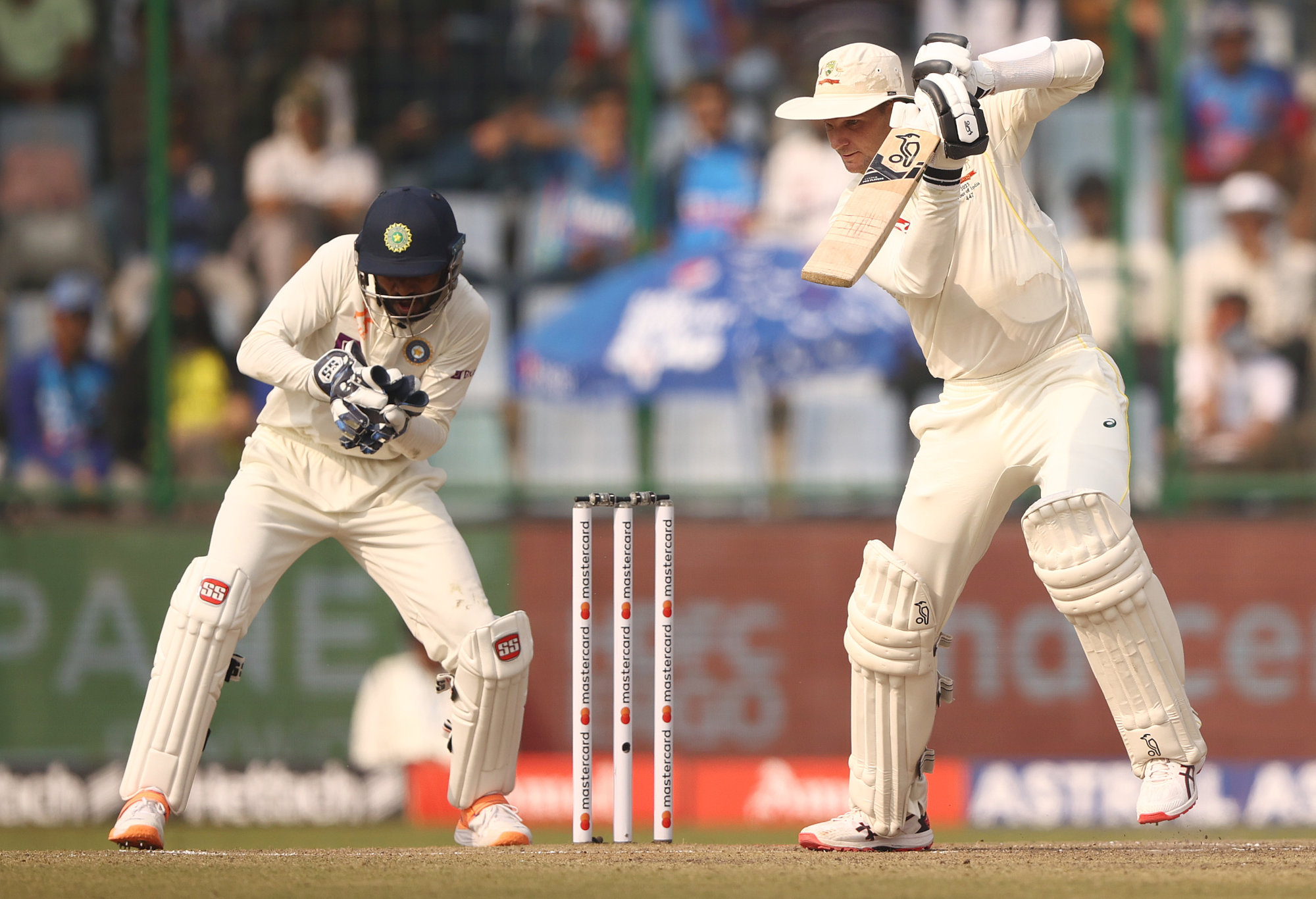There’s few topics that will get an Indian cricket fan riled up any more than pointing out their poor record when it comes to pitch preparation.
Whether they like it or not, India has a poor reputation for tailoring (not necessarily doctoring) pitches among the global cricket community.
And if the Indians really cared about changing that perception, the best thing they could do is to stop dishing up substandard surfaces like the Indore pitch which produced 14 wickets on day one and had both teams all out before lunch on day two.
Australia’s late collapse of 6-11 to be all out for 197 means they have a lead of 88 which is probably worth double that amount by normal standards. The foreign conditions have played a part but the Aussies now have had four dramatic collapses in the space of just five innings with 6-68 and 10-84 in Nagpur followed by the 8-28 capitulation in Delhi.
CLICK HERE for a seven-day free trial to watch the Tour of India on KAYO
The vision of the ball exploding through the top of the Indore surface almost from the get-go on day one was alarming. The pitch was slightly better on day two but still a minefield.

Alex Carey walks off after he was dismissed by Ravichandran Ashwin. (Photo by Robert Cianflone/Getty Images)
It wasn’t dangerous as far as posing a risk of injury but it did pose a significant impediment to each batter’s ability to score runs.
And before any Indian fans arc up about this being an Australian having a whinge because the touring side copped floggings inside three days in the first two Tests, that is not the point at all.
India deserved to win both those matches as they were the better team.
The pitches on each occasion definitely suited the home team’s talented spinners but that’s how international cricket should be, or as former India captain and coach Ravi Shastri summed it up on commentary when criticisms of the pitch were raised: “home conditions”.
Both those matches lasted only three days for the most part because the Australian batters couldn’t occupy the crease – they were either too skittish and played reckless shots because they were worried that a ball “had their name on it” or too wary in defence which led to them being trapped on the crease and bowled by half-hearted hopeful prods.
Those two wickets were rated average by match referee Andy Pycroft, which doesn’t sound good but it’s actually the third highest ranking that can be given of the six – very good, good, average, below average, poor and unfit.
Sanctions in the form of demerit points which can lead to a venue losing hosting rights are only dished out if a pitch is rated in the bottom three categories.
And poor pitches are not just isolated to India – the Gabba pitch last summer which seamed all over the shop was given a below average rating and the MCG was considered poor in 2017 when a turgid wicket was trotted out for an Ashes Test which finished in a draw after only 24 wickets fell across five days.
The standard of the pitch matters in many ways.
Poor old Jackson Bird bent his back for 30 wicketless overs during England’s innings and after being dropped for the next match, never played a Test again.
India have been on the receiving end of a poor pitch when they’ve been on tour as well. There was a similar batting road rolled out at Nottingham in 2014 which match referee David Boon rated poor – it was such a paradise for runs that English No.11 James Anderson hit 81 as he and Joe Root registered a record 196-run last-wicket partnership.
This wicket in Indore is possibly going to produce a Test that is finished well before the five days are up.
Not all Tests need to go the distance or close to it. We saw last summer when the West Indies took on Australia in Perth that a five-day contest can be a snoozefest if there’s a lack of genuine competition.
And a three-day Test can be thrilling when bowlers get the upper hand and batters have to scrap and fight for every run.
But what we’ve seen in Indore is not a fair fight between bat and ball.
The prodigious turn that bowlers from both sides are extracting are making some of the best batters on the planet look like they’ve been plucked out of the European Cricket League, well not quite that bad but you get the drift.
Bengaluru’s M Chinnaswamy Stadium was rated below average after another raging turner last year for a Test against Sri Lanka which lasted three days but the Ahmedabad pitch the previous year which hosted a two-day affair against England was considered average.
Broadcast rights holders pay squillions to beam cricket into devices throughout the globe but the product is cheapened when days four and five are often redundant.
And cricket fans are being short-changed too. We don’t want to go back to our everyday lives before we have to. We selfishly want these “flannelled fools” providing entertainment on the aforementioned devices.
In no other professional sport is the curator as important to the standard of play that occurs and in this case, the Holkar Stadium groundstaff have let everyone down.
Green unlucky as Waugh, Haddin toss up umpire review theory
Cameron Green can consider himself unlucky to be given out for 21 to a Umesh Yadav delivery which was shown on review to only just be clipping the top of leg stump.
Mark Waugh on Fox Cricket during the innings break questioned whether neutral umpire Joel Wilson considered India’s lack of reviews in making his on-field decision.
“That was unlucky, that was a real change point. That’s probably given not out most days of the week. It was just shown to be clipping the top of the stump,” he said of the West Indies veteran’s decision.
“I wonder whether the umpire was thinking Australia have got reviews, India haven’t. I’ll leave it up to Australia to review but of course it stays with the umpire’s call once it’s given out.”
Brad Haddin agreed by saying: “That was a huge call, the Cameron Green LBW. If both teams have reviews there, the umpire doesn’t give that out. It’s disappointing but we’re still in front of the game.”
Handscomb in holding pattern
Peter Handscomb has done well in this difficult series for batters but not enough to ensure he will be on the field on Australia’s next Test tour in England.
Handscomb was watchful, resolute and assured for the most part during his 98-ball stay at the crease on day two of the third Test.
Although he only scored 19, in the context of this match, his 40-run partnership with Green which soaked up 22 overs could be worth a lot more than those modest numbers suggest.
The Victorian 31-year-old is averaging a credible 32 from five innings this series, highlighted by his unbeaten 72 in Delhi, but has yet to answer the question of whether he’s a subcontinent specialist or worth keeping around for the long haul.

Peter Handscomb of Australia bats. (Photo by Robert Cianflone/Getty Images)
With the jury well and truly out on whether Travis Head’s future is as an opener and doubts growing about David Warner’s chances of ever wearing the baggy green cap again, the Australian selectors have a few issues to resolve before June when they potentially play the World Test Championship final and then the Ashes.
They have Usman Khawaja as a certain selection as one opener, Marnus Labuschagne, Steve Smith and Green as middle-order locks but they then need to find out where Head best fits. If that’s in the middle order, Handscomb’s chances of retaining his spot beyond this tour will be bleak unless he can come up with an impactful knock in his last three innings in India.
And if Head is not viewed as an opener, the key question then becomes who partners Khawaja and whether the selectors can justify giving Warner one last chance or to take a punt on Matt Renshaw, Cameron Bancroft or Marcus Harris.
>Cricket News

 BLOG
BLOG 
%20(3).jpeg)



0 Comments